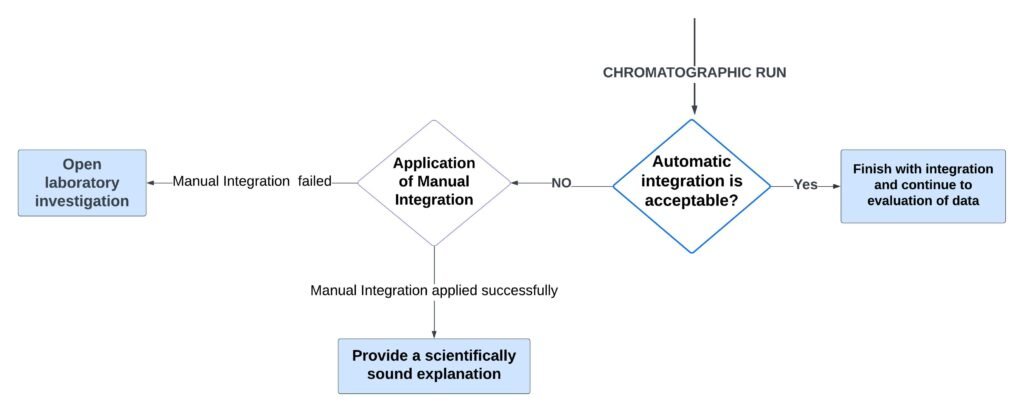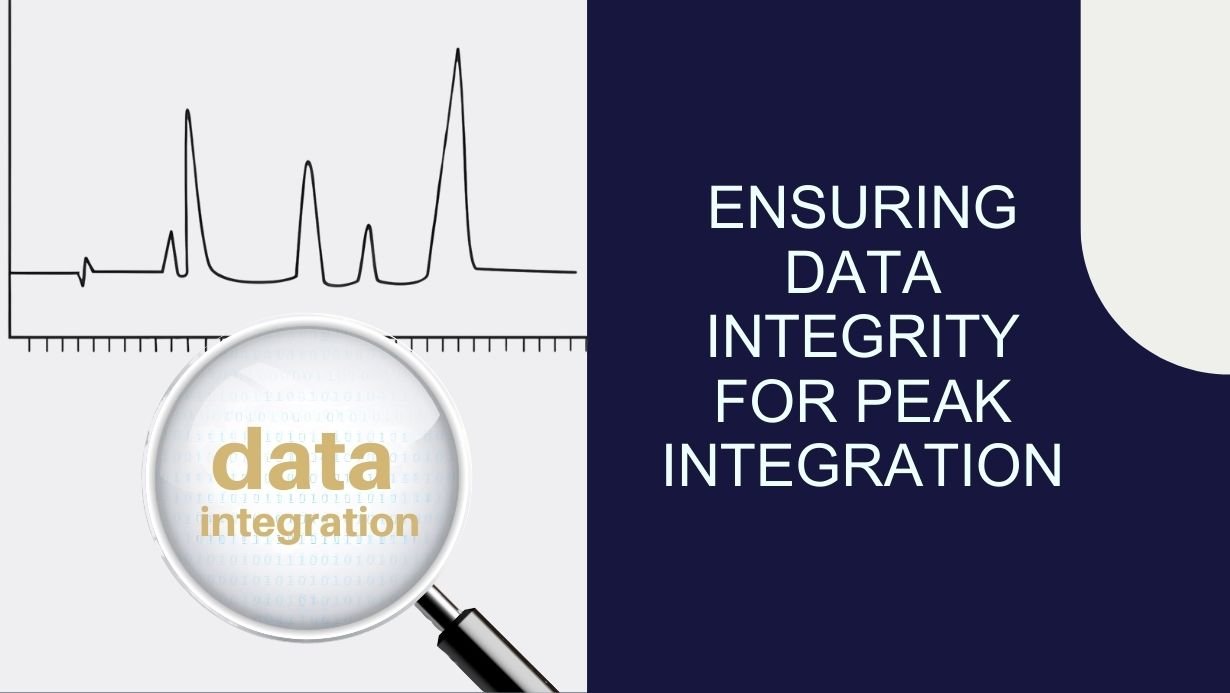Why Data Integrity Is Crucial for Acurate Peak Integration
In today’s regulated environments, having a robust analytical method is in every industry’s best interest, particularly in quality control (QC) laboratories. Reliable analytical methods ensure accurate and consistent results, which are crucial for maintaining product quality and meeting regulatory standards.
In QC laboratories, peak integration is essential for accurate and reliable data analysis, particularly in chromatography. Data integrity ensures that every step of the peak integration process, from data collection to analysis, produces valid and accurate results. This helps maintain confidence in the laboratory’s output and meets regulatory standards. Any discrepancies or errors in data can lead to faulty analyses, potentially causing significant issues, from product recalls to health risks, especially in pharmaceuticals and related industries.
Regulatory Requirements for Data Integrity in Peak Integration
Regulatory agencies impose stringent requirements on QC laboratories to ensure data integrity. These regulations mandate that labs implement measures to maintain accurate, relevant and traceable records, prevent data tampering, and facilitate transparent reporting. Here are specific regulatory guidelines and requirements, all of which contribute to a robust system that protects against data manipulation and ensures traceability throughout the data lifecycle.
SEE ALSO: Good Chromatography Practices – GMP Insiders Guide
FDA 21 CFR Part 11
FDA’s (Food and Drug Administration) 21 CFR Part 11 provides guidelines on electronic records and electronic signatures, outlining requirements for their accuracy, reliability, and security. It specifies that electronic records should be protected against unauthorized changes, have audit trails, and include electronic signatures where necessary.
FDA’s Q&A Guidance for Data Integrity and Compliance With Drug cGMP
The FDA’s Q&A Guidance for Data Integrity and Compliance with Drug cGMP provides essential information on maintaining data integrity within the context of drug manufacturing. The Q&A format addresses common questions and scenarios that may arise in QC labs, providing practical advice on ensuring compliance with current Good Manufacturing Practices (cGMP).
PIC/S 041-1 Good Practices for Data Management and Integrity in Regulated GMP/GDP Environments
PIC/S (Pharmaceutical Inspection Co-operation Scheme) 041-1 guideline provides comprehensive guidance on maintaining data integrity, particularly for labs operating in regulated GMP (Good Manufacturing Practices) and GDP (Good Distribution Practices) environments. It covers key aspects such as data life cycle, data governance, audit trails, electronic records, and training and competence.
MHRA GxP Data Integrity Guidance
MHRA’s (Medicines and Healthcare Products Regulatory Agency) GxP Data Integrity Guidance outlines specific principles for data integrity across various “GxP” (Good Practice) guidelines, including GMP and GLP. This guideline emphasizes the need for accurate data collection, audit trails, and secure record-keeping, particularly for electronic systems used in chromatography and other quality control procedures.
EU Eudralex Annex 11
Annex 11 is an integral part of the European Union’s Good Manufacturing Practice (GMP) guidelines, specifically addressing computerized systems used in regulated environments. This guideline is particularly relevant for QC labs handling chromatographic data, and it offers comprehensive coverage of data integrity and compliance requirements in terms of system validation, access control, audit trails, data backup and recovery, and periodic reviews.
RELATED ARTICLE: Computer System Validation (CSV) in GMP
WHO Annex 4
WHO’s (World Health Organization) Annex 4 document highlights the global emphasis on data integrity and provides further guidance on managing data accurately and reliably in QC labs.
Key Aspects to Ensure Data Integrity in Peak Integration
To ensure data integrity during peak integration, labs must implement several key aspects:
Peak Integration SOPs
To ensure consistency from analyst to analyst and from one generated result set to another, there is a need to set a Standard Operating Procedure (SOP) that sets up the standards for evaluation and interpretation of generated data. SOPs provide clear guidelines that reduce the risk of human error, promote uniformity in analysis, and maintain data integrity.
The SOP must describe the use and rules behind both manual and automatic integration, detailing when each approach is appropriate and how to handle each step accurately. This ensures that analysts can navigate the peak integration process consistently, regardless of the data’s complexity.
Additionally, the SOP should describe the procedure for peak integration according to the available Chromatography Data System (CDS) operating manual. This helps ensure that all analysts follow the same steps, use the same parameters, and document results uniformly, further supporting consistency and data integrity throughout the peak integration process.
To better illustrate the challenges that chromatographers might face, the SOP should also include complex chromatography examples for peak integration. This provides practical insights into how to handle such cases, helping analysts understand potential pitfalls and how to overcome them, thereby improving the integration process overall.
Automatic Integration vs. Manual Integration

Regardless of the complexity of chromatographic separation, the integration of peaks must start with an automated process. This helps streamline the evaluation of generated data, allowing for a quicker and more consistent analysis. In contrast, manual integration slows down the entire process of evaluating the generated data, both in terms of performing the integration and reviewing the results.
Automatic integration relies on software algorithms to process chromatographic data, enhancing the speed and consistency. Labs must balance these methods, considering the complexity of chromatograms and available resources, to achieve accurate and reliable peak integration. Manual integration involves an analyst manually adjusting parameters and analyzing chromatograms. This approach offers flexibility and control but introduces a higher risk of human error and is time-consuming.
Automatic Integration
Automatic integration leverages software algorithms to process chromatographic data with minimal human intervention. This method increases efficiency and consistency, reducing the likelihood of errors. Automation is particularly useful for high-throughput laboratories handling large volumes of samples. However, labs must ensure that the algorithms are configured correctly and reviewed periodically to avoid potential inaccuracies and maintain data integrity.
Should Manual Integration Be Allowed?
Manual integration is a process used by a chromatographer to modify the integration of a peak by adjusting the baseline, splitting peaks, or dropping the baseline as assigned by the Chromatography Data System (CDS). This allows the chromatographer to overrule the pre-established automatic integration parameters.
This approach involves skilled analysts directly interacting with chromatographic data, adjusting baselines, peak areas, and other parameters by hand. While this method allows for flexibility and nuanced decision-making, it is prone to human error and can be time-consuming. However, in cases of complex data or where fine-tuning is necessary, manual integration remains a valuable tool, particularly when paired with thorough review processes.
Manual integration is often a topic of discussion regarding its appropriateness in the analytical process. The answer is clear: manual integration is not only allowed, but sometimes necessary. No automated integration setup is ideal, and slight disturbances in chromatography can necessitate alterations to the master method.
Manual integration becomes essential when such adjustments are justified, for example, to ensure consistent peak integration across all chromatograms – system suitability tests (SST), standards, and samples. This ensures that all data is treated equally and that the integrity of the results is maintained, addressing any inconsistencies that the automatic parameters could not effectively handle.
Banning manual integration outright could lead to numerous laboratory investigations. It’s important to remember that no CDS is designed perfectly, and manual integration is often necessary. The critical question is whether there’s control over manual integration activities within the lab and whether these modifications are scientifically justified.
However, there might be cases where manual integration for a certain method is entirely prohibited, necessitating stringent adherence to pre-established integration parameters.
Manual Integration vs. Manual Intervention
Reading the terms, it may seem like a play on words, but the distinction between the two highlights different ways of categorizing manual attempts to refine chromatographic data:
Manual Intervention
Manual intervention involves adjusting retention time windows or integration parameters in a way that applies to every chromatogram in the generated result set. This approach is often necessary due to changes in the chromatography, which may be affected by unexpected external factors. These adjustments are then applicable to each chromatogram in the sequence.
Peak windows are often set too tight, necessitating an extension for the CDS to correctly identify the peak. Mobile phase alterations or a column not performing at its best can lead to retention time shifts, which manual intervention addresses by modifying the master method.
Adjusting the minimum peak area is also appropriate in certain cases, allowing analysts to reject peaks that aren’t of interest. Peak width adjustments might also be necessary to ensure accurate identification and integration.
Manual Integration

Manual integration, on the other hand, modifies the baseline by manually defining the start and end points of a peak, achieving the desired shape. This process is typically performed on a per-chromatogram basis, allowing for fine-tuning of individual data.
In most cases, manual intervention is easier to justify since it applies to all generated chromatograms. However, manual integration often requires additional justification, raising questions such as why the change is not applicable to other chromatograms or why peak integration cannot be achieved automatically.
Choosing the Right Approach
Selecting the appropriate approach to peak integration is crucial for maintaining accuracy and consistency in QC labs. This decision involves balancing manual and automatic integration methods, ensuring clear guidelines for each process, and training analysts to handle data accurately and reliably. The right approach helps manage the integration process effectively, reducing the risk of errors, inconsistencies, and biased results.
However, various pitfalls can occur if integration is not handled correctly. Here are some examples of wrongful attempts at peak integration:
- Extensive Use of Inhibiting Peak Integration
Inhibiting peak integration throughout the time period of the analysis can significantly skew results. This is especially concerning in analyses for related substances, where accurate peak integration is crucial for identifying and quantifying known and unknown impurities. Inhibiting integration may lead to erroneous conclusions, potentially resulting in false positives or negatives.
- Excessive Data Reprocessing
Analysts reprocessing data multiple times can indicate inconsistency or lack of clarity in the peak integration process. This excessive reprocessing not only slows down the analysis process but also risks introducing human error and bias, undermining the accuracy of the final results.
- Biased Peak Integration Parameters
Biased integration involves using different peak integration parameters between sample, standard and system suitability runs. For instance, peak fronting or peak tailing sensitivity applied to a sample run for impurities but not to the standard of the same impurity leads to comparative inconsistencies. This discrepancy makes it difficult to compare results accurately and undermines the reliability of the entire analysis.
Development of Data Processing Methods
Creating robust data processing methods involves designing algorithms or workflows that can accurately handle peak integration data. This includes establishing parameters for automatic integration software, developing manual review guidelines, and ensuring consistency across all processes. Method development also involves validation steps to ensure that each method performs reliably, supporting data integrity and compliance with regulatory standards.
User Access Levels
Defining user access levels is crucial for preventing unauthorized changes to data and ensuring data integrity. By restricting access to only those who need it, labs can control who can view, edit, or approve peak integration results. Access levels should be tiered to align with job responsibilities, from analysts to reviewers and managers, reducing the risk of data tampering and supporting compliance.
The protection of data records is essential, and activities like overwriting, deleting, and modifying should be strictly prohibited or limited for users. This helps prevent unintended or unauthorized changes, further supporting data integrity and compliance with regulatory standards.
Electronic Signatures
Electronic signatures provide a secure and traceable way to approve and certify peak integration results. They also streamline the review and approval process, replacing traditional hand-written signatures with digital ones. Electronic signatures are time-stamped, offering proof of authorization and compliance with regulatory requirements. This enhances transparency and accountability in peak integration workflows, reducing the risk of unauthorized changes.
Data Review and Approvals
Comprehensive data reviews and approvals are essential for maintaining data integrity in peak integration. Review processes should include checks for accuracy, consistency, and compliance with SOPs. Once data has been reviewed, it needs approval from authorized personnel. Electronic signatures can facilitate this process, ensuring transparency and traceability. Regular reviews also help identify and correct any issues, supporting accurate reporting
Audit Trails
Audit trails track every change made during the peak integration process, from data collection to final approvals. This ensures transparency, allowing labs to monitor who made changes, when, and why. Audit trails are crucial for compliance with regulatory standards, helping to prevent data tampering and facilitating investigations in case of discrepancies. They also provide a record of how data has been managed, supporting consistency and integrity.
It’s essential that audit trails are enabled for every manual integration, documenting the chromatographer’s thinking and rationale behind each adjustment. This ensures transparency and provides a record of how the integration was modified, supporting consistency across analyses and compliance with regulatory standards.
Documenting Unusual Peak Integration Events
Unusual peak integration events should be meticulously documented to improve the lifecycle of the analytical method and support revalidation of the initial setup integration parameters in the Chromatography Data System (CDS). Detailed records of these events provide valuable insights into potential weaknesses or inconsistencies in the integration process.
This helps refine and adjust the method over time, ensuring consistent and accurate results. The record should include a thorough description of the event, potential reasons why this unusual integration occurred, and steps taken to address it. This promotes continuous improvement and reinforces data integrity throughout the chromatographic analysis process.
Reviewing Peak Integration
Comprehensive peak integration reviews help identify and correct inconsistencies, maintaining confidence in the results. They also support regulatory compliance, providing transparent records of how data has been handled throughout the analysis.
Importance of Transparent Reporting
Chromatograms that are part of data reports should clearly show how peaks have been integrated. For parameters like “Related Substances,” it is essential that the scales are not set up solely according to the largest peak, as this practice might hide the integration of smaller peaks, like impurities. Such representation could be misconstrued as attempting to conceal peak integration, which is considered inappropriate. Every chromatogram must be displayed in a way that targeted peaks, irrespective of their size, are clearly visible and integrated accurately.
Tracking Integration Activities
It is crucial to maintain a detailed trace of all peak integration activities, which should be readily available for review. On each chromatogram, there should be clear annotations indicating the method of integration (automatic or manual). This helps in understanding the analytical decisions made during the data processing phase and ensures that any manual adjustments are justified and transparent.
Regular Reviews and Audits
Regular reviews and audits of the peak integration process are necessary to maintain the integrity of the analytical results. These reviews help verify that all integration guidelines and SOPs have been followed accurately. They also ensure that any deviations from the standard procedure are properly documented and justified, supporting the reliability of the final results.
Ensuring Compliance and Accuracy
By thoroughly reviewing peak integration, labs can ensure compliance with regulatory standards and maintain the accuracy of their analyses. This double check review process helps identify any potential issues or inconsistencies early, allowing for timely corrections and adjustments. Ultimately, this ensures that the data produced is reliable and can be confidently used for making critical decisions.
Peak Integration Tips to Ensure Data Integrity
The team behind GMP Insiders has included some useful tips to help chromatographers ensure data integrity in peak integration:
- Invest time and effort in the development of a suitable data processing method for automatic integration: A good starting point for every generated data will save a lot of time in post-analysis integrations.
- Make sure peak integration is visible on chromatograms in data reports and reasons for manual integrations are available in the data audit trail.
- Document peak integration and data processing reviews with electronic signatures that will be traceable for every generated data in a result set package.
- Protect data records from unauthorized changes by setting up appropriate user privileges.
- Discuss complex peak integration situations with the team, to overcome doubts when interpreting results.
FAQ
Is It Allowed to Perform a Trial Sample Injection Before Running the Official Test?
No, it is forbidden to test for compliance before conducting the analysis. Doing so could compromise the integrity of the test and introduce bias into the results. However, there might be specific guidance for column conditioning before analysis, ensuring the instrument is prepared for the test. This conditioning process could involve running blanks to equilibrate the column and stabilize the system.
How Can I Ensure Accurate Integration for Peaks With Asymmetrical Shapes?
For peaks with asymmetrical shapes, such as fronting or tailing peaks, it’s important to adjust integration parameters carefully. Consider modifying baseline parameters, peak width, and peak area thresholds to accommodate asymmetry.
How Do I Manage Integration Inconsistencies Arising From Sample Variations?
Integration inconsistencies can occur due to variations in sample composition or concentration. To manage this, ensure that sample preparation procedures are consistent and reproducible. Additionally, set integration parameters that account for potential variations, and consider manual intervention to address specific inconsistencies.
What Measures Can I Take to Ensure Consistent Integration Results Across Multiple Analysts?
Consistent integration results across analysts can be achieved through comprehensive training and clear SOPs. Ensure that all analysts follow standardized procedures for both manual and automatic integration, and conduct regular reviews to identify and correct any discrepancies. Setting up a robust automatic integration method is always the best approach to ensure consistent integration across analysts.
How Do I Ensure Data Integrity When Transitioning Between Different CDS Systems or Software Versions?
When transitioning between CDS systems or software versions, validate the new system thoroughly to ensure it produces consistent results. Compare integration results from both systems for consistency, and revise SOPs as needed. Additionally, maintain detailed records of the transition process to document any changes made.
Conclusion
In conclusion, ensuring data integrity in chromatographic peak integration is not merely a procedural necessity but a foundational element of reliability and trust in quality control laboratories. As we’ve explored, maintaining stringent adherence to regulatory standards and SOPs is imperative for achieving accurate and consistent analytical results. The dual approach of employing both manual and automated integration methods allows labs to handle complex data effectively, reducing the risk of errors and ensuring compliance.
Furthermore, the emphasis on comprehensive data review, transparent reporting, and the rigorous documentation of integration methods and audit trails illustrates the commitment to integrity that is required in modern QC labs. By establishing robust methods and fostering a culture of continuous improvement and accountability, laboratories can safeguard the integrity of their analytical data. This not only supports regulatory compliance but also ensures the safety and efficacy of products in industries where quality cannot be compromised.















